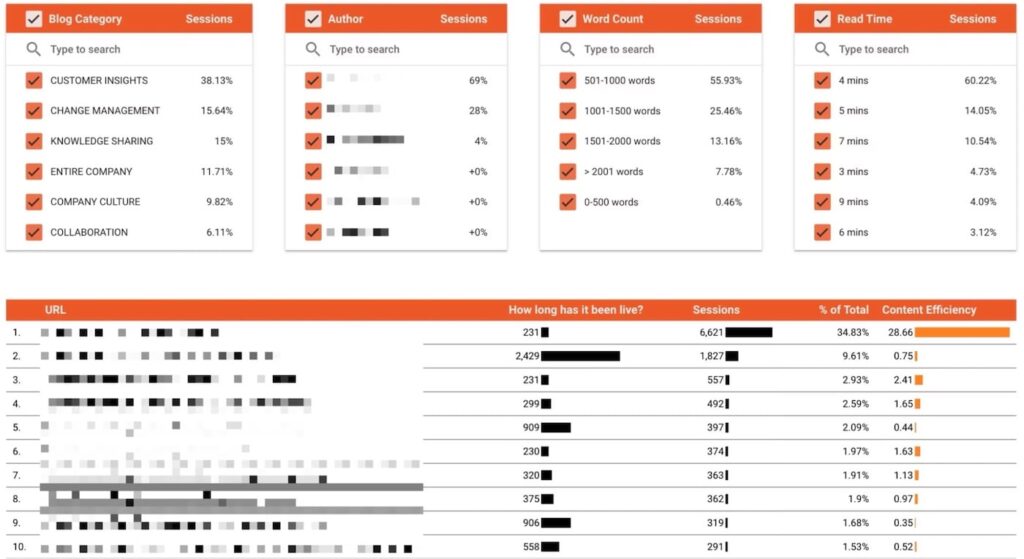I Use GenAI for Analytics Implementation (Almost) Daily. Here’s My Process.
Most people think of generative AI as a writing assistant for creating blog posts, ad copy, or brainstorming ideas. And while it’s helpful there, that’s not where it’s most powerful.
The real magic shows up in analytics implementation.
When setting up analytics (aka setting up tagging for a site), you’re working with logic, structure, and testable outcomes. You can debug it. You can QA it. The output either works or it doesn’t—no gray area. That makes it a perfect fit for generative AI.
In this article, I’ll walk you through why this matters, what you need to know to use it effectively, and how I personally use AI almost daily to speed up tagging work, ask better questions, and avoid technical debt.
Why Starting With Useful Questions Is Still Crucial
“You are only as good as the questions you ask” (often credited to Albert Einstein).
We’ve all heard this and realize the importance here.
Well, in analytics, it’s downright critical to nail these. Otherwise, you might as well just “set up” analytics by installing it in the 10-second fashion it takes (install the pageview tag everywhere) and call it a day.
It’s important to push to ask yourself, “What value are you getting from doing that?”
Most likely little to none. Therefore, it’s crucial to have a dedicated company session on “questions we’re trying to answer about the business” before running into your favorite analytics tool. You’ll thank me later.
Note: I do think Generative AI is also very useful at the questions asking/gathering phase.
It works well in two main ways:
- If you are having trouble starting with questions, ask it for ideas based on the business model of your company and the industry you are in.
- Once you are finished, feed your favorite LLM what questions you’ve come up with and give it a ton of context on your business. (Just talk for a few minutes, explaining how your business works. Don’t worry about prompts, just speak into it.) Ask it if anything is missing from what you came up with.
Essential Technical Tools for Implementation: Dev Tools + GTM Preview Mode
In order to work with code from LLMs and extend the functionality of what is possible, you need to know the mediums in which we can test the new tagging code.
What I’ll be going over is exactly what I use, so you probably don’t need to worry about learning other ones, as these absolutely work very well for me.
Chrome Dev Tools
Chrome Dev Tools is the native developer console in Chrome. I still use Chrome (largely for the Chrome extensions). You can bring up Dev Tools on any page this way:

Or, you can use the keyboard shortcut shown. (I had no idea how to get here normally as I’ve been using the keyboard shortcut for years now.)
Here is an image showing how it looks and a rundown on the most useful sections of it. I’ve customized my order of how they appear, and with my Chrome extensions, so it will definitely look different than yours:

Tip: The JavaScript console can save you time, and you can ask LLMs to “give me JavaScript to test this in the console” before you go setting something up in Google Tag Manager (or whatever tag manager you use).
GTM Preview Mode
I figured it would be easier to just show you, so here is a quick run-through of how preview mode in GTM works:
Real-World Implementation Examples
To make this more concrete, I’ve put together a couple of examples that showcase my process:
Example 1: Solving Flat URL Site Architecture 😬
A common “issue” is when a website doesn’t have subfolders on it. I’ll use this Loganix site I found to not have subfolders, as an example:
https://loganix.com/seo-keyword-research/
instead of
https://loganix.com/blog/seo-keyword-research
That’s troublesome for analytics, as if you wanted to report on blog traffic over time, you couldn’t do it with the existing setup.
You could solve this in one of two ways:
- Using a bunch of messy Regex (Regular Expressions) with URL rules. It would probably never capture everything and would be very messy, and something you would need to update over time. It would, however, work retroactively (however far back you were firing the pageview tag in your analytics tool).
- Look for something “unique” on the page that only this ‘page template’ has and no other one has. This might seem daunting if you aren’t a developer, but you really don’t need to be. You need to pay attention to details and over-communicate back to your LLM of choice.
I’ll be showing method #2 in my video:
Example 2: Creating Next Level Content Intelligence Tracking
When it comes to content marketing analytics, we need to move beyond simply reporting that “blog traffic is up.” While basic traffic metrics provide a starting point – especially when comparing to previous periods – they don’t offer the actionable insights that stakeholders really need.
Content Marketing Metrics Worth Tracking
Looking at your content marketing through a more sophisticated lens allows you to understand not just performance, but also efficiency and opportunity. The metrics that really matter include:
- Content lifespan analysis: How long after publication does content continue to generate traffic? This helps identify evergreen content versus time-sensitive pieces.
- Update opportunities: Identifying older content with declining traffic patterns that could benefit from refreshing, rather than always creating new content.
- Author effectiveness: Which content creators generate the most engagement? This creates natural opportunities for knowledge sharing and best practices.
- Category performance: Which content themes or topics resonate most with your audience?
Content Intelligence Dashboard Elements
A well-designed content intelligence dashboard should display:
- Blog categories: Organized by theme to track which topics drive the most engagement
- Author metrics: Performance by creator to identify successful writing styles
- Content format metrics: Word counts, read times, and engagement rates to understand optimal content length
- URL performance: Individual page analytics to identify top performers
- Content age indicators: How long content has been live to track longevity
- Content efficiency metrics: Custom calculations based on effort required, publication time, and resulting engagement
Application in Practice
When implemented effectively, this approach transforms content from a creative guessing game into a data-driven strategy. Marketing teams can make informed decisions about:
- Which topics deserve more coverage
- Optimal content length for different audience segments
- Which older pieces to update versus which to create from scratch
- How to allocate resources among different content creators
- The right publishing cadence for maximum impact
This intelligence allows you to develop a content strategy that maximizes ROI while continuously improving based on real performance data rather than assumptions
Example of this in action after it’s been set up and collecting data for some time:

Why This Method Is the Best Way of Bettering Your Analytics Skills
If you were to ask me about this a few years ago, I would have said the best way to learn is via a course and personal mentorship if you can afford it (those still are crucial ways), but this opens up new opportunities to learn. Learn by doing is one of my favorite ways of growing.
Now you have a personal assistant by your side and can trust but verify everything you are doing before publishing it to the site.
If you are doing the all-important job of aligning upfront on the questions the business is trying to answer (and setting expectations with the stakeholders of how the data will look), then the rest is “downhill” from there with the help of Generative AI.
Written By
Ryan Levander
Edited By
Carmen Apostu
